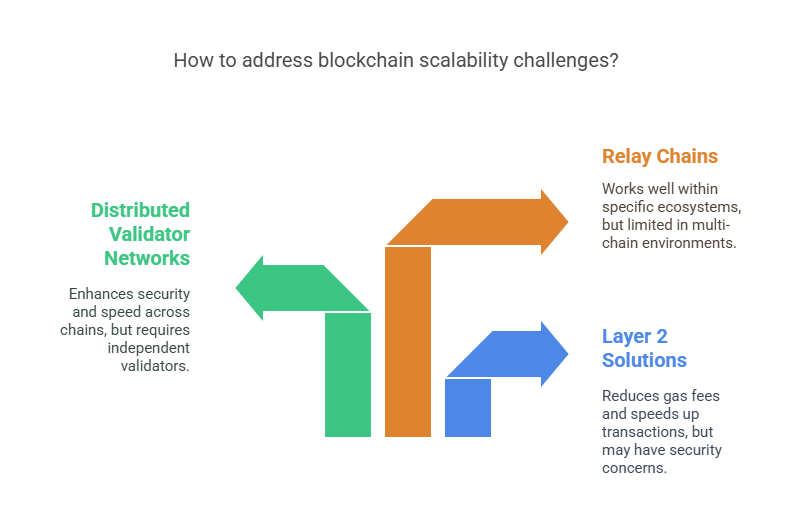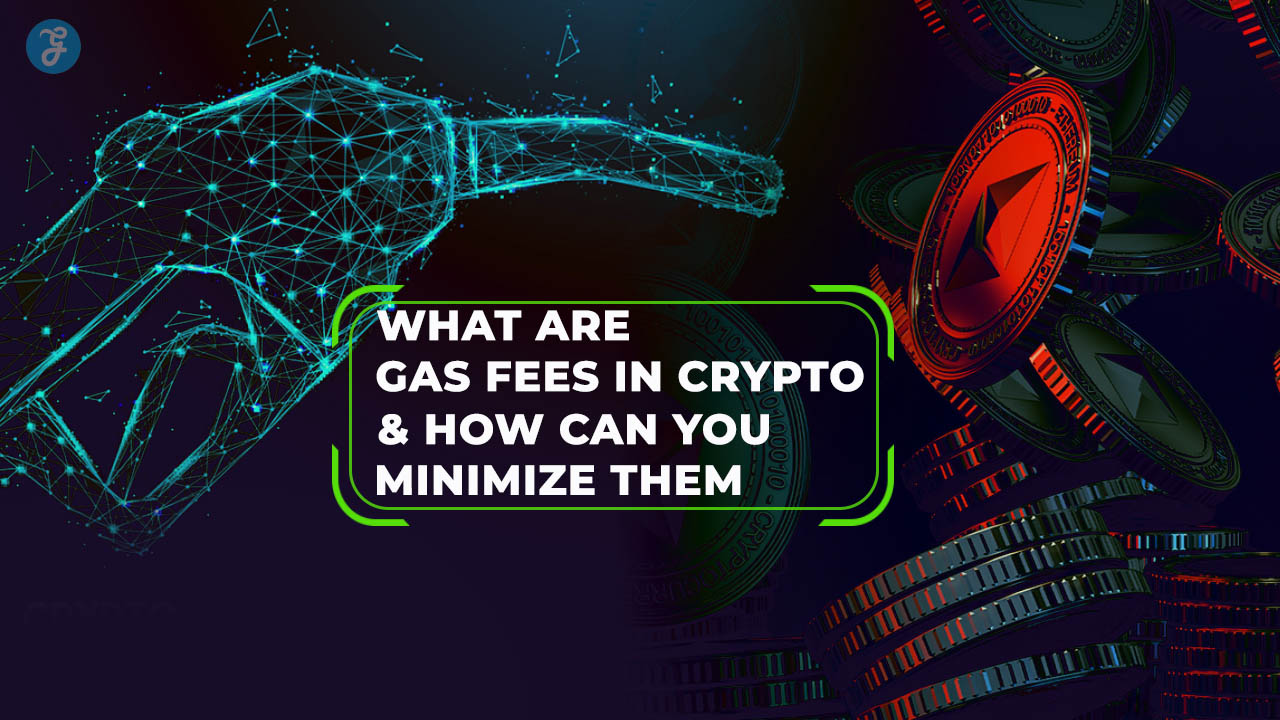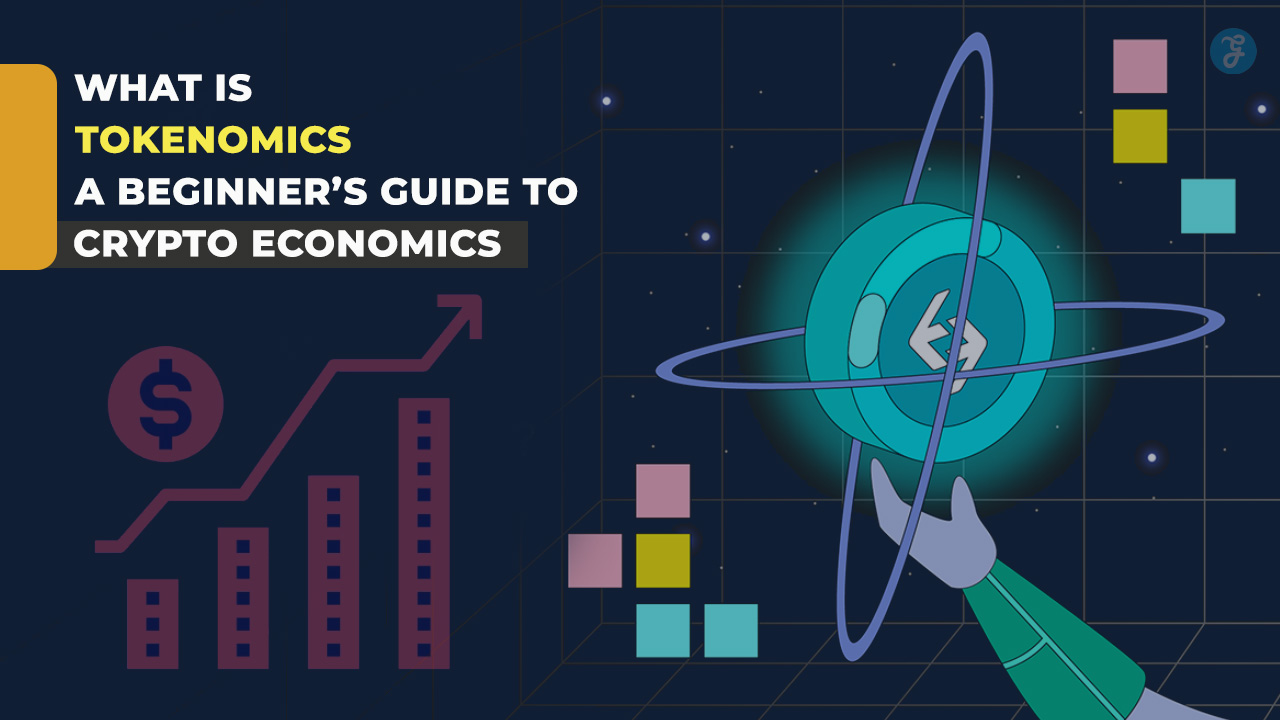Blockchain networks are growing fast, but they often don’t work well together. Developers and users face a key problem—apps locked to one blockchain can’t reach their full potential.
This limits asset movement, collaboration, and a smooth experience.
Cross-chain technology fixes this issue by allowing blockchains to communicate. It enables decentralized applications (dApps) to share assets and data without breaking security or decentralization.
In this blog, you’ll learn how to build cross-chain Web3 applications that solve these problems while improving user engagement.
Keep reading to unlock the steps to seamless cross-chain development!
Defining the Use Case for Your Cross-Chain Web3 Application
Identify user needs spanning different blockchain ecosystems. Focus on real-world problems like token transfer, liquidity fragmentation, or decentralized finance (DeFi) access. For example, a cross-chain application can enable seamless trading between Ethereum and the Cosmos ecosystem without switching wallets.
Targeting multiple networks increases audience reach and usability. Cross-chain solutions improve user experience in DeFi apps by reducing friction from isolated chains. This approach boosts innovation and attracts users across diverse blockchain ecosystems.
Key Considerations in Cross-Chain Development
Building a cross-chain application means solving tricky challenges in blockchain connectivity. You must focus on smooth interaction between chains while keeping performance steady and secure.
Understanding interoperability protocols
Interoperability protocols connect different blockchain networks. Polkadot uses relay chains to link multiple blockchains, enabling seamless token transfers and cross-chain solutions.
Cosmos employs Inter-Blockchain Communication (IBC) for the same purpose, offering efficient communication between independent blockchain ecosystems. These protocols reduce liquidity fragmentation by allowing decentralized exchanges (DEXs) and dApps to share resources across chains.
Cross-chain bridges also play a key role in improving interoperability. They allow token transfers between networks like Ethereum and Binance Smart Chain using wrapped assets or smart contracts.
This ensures smoother operations within the web3 ecosystem while reducing security vulnerabilities associated with isolated chains. Effective use of these tools drives better scalability and strengthens blockchain technology platforms.
Addressing scalability challenges
Scalability issues often arise with growing blockchain ecosystems. Layer 2 (L2) solutions like Polygon and ZkSync reduce gas fees by up to 90% while keeping transactions quick. These provide a practical way to handle more users without slowing down networks or increasing costs.
Security risks in cross-chain bridges can worsen scalability problems. Vulnerable bridges and smart contracts may cause delays or failures during high traffic. Distributed Validator Networks can help by using independent validators for faster, secure confirmations across multiple chains.
Relay chains work too but struggle outside specific ecosystems, limiting their reach in multi-chain environments.
Ensuring data consistency across chains
Cross-chain messaging allows smooth communication and data sharing across blockchain networks. This ensures that details about token transfer, smart contracts, or decentralized applications (dapps) remain accurate across chains.
Security risks like exploits on cross-chain bridges threaten this consistency. Distributed Validator Networks help fix this by reducing single points of failure during transactions.
Asset bridges and atomic swaps play a big role in keeping data integrity intact while transferring tokens or wrapped assets between chains. These tools ensure information remains synchronized even with high transaction volumes.
Using strong protocols to prevent hacks can also guarantee better reliability across blockchain ecosystems.
Security Best Practices for Cross-Chain Applications
Secure your cross-chain apps by strengthening smart contracts, preventing bridge risks, and protecting token transfers—read more to keep your systems safe.
Implementing robust smart contract audits
Smart contract audits are vital for securing cross-chain applications. They identify risks and ensure smart contracts follow best practices before deployment.
- Conduct a thorough code review to find errors or bugs in the smart contract. This step ensures the code performs as expected and minimizes vulnerabilities.
- Assess potential security weaknesses by simulating attacks. This helps protect against threats, like cross-chain bridge exploits, common in blockchain networks.
- Test all smart contract functions under various conditions to check for reliability. Ensure they interact correctly across blockchain ecosystems during token transfers or dApp operations.
- Optimize gas usage within the smart contract to reduce transaction costs. Lower gas fees improve user experience (UX) and encourage broader adoption of your Web3 application.
- Verify compliance with protocols used in cross-chain solutions like Avalanche Subnets or Cosmos SDKs. Ensuring consistency avoids liquidity fragmentation between ecosystems.
- Review business logic within the smart contract to confirm alignment with your application’s goals. For example, verify decentralized finance (DeFi) protocols manage wrapped assets or DEX trades properly.
- Use reputable auditors such as Certik, ConsenSys Diligence, OpenZeppelin, or Quantstamp for professional audits. Their expertise adds credibility and reduces errors before launch.
- Test on secure testnets before deploying on mainnet systems using tools like Polkadot or Ethereum networks. This step ensures accuracy in multi-chain environments while minimizing risks post-launch.
- Repeat audits after significant updates to avoid introducing new vulnerabilities into live applications used by cryptocurrency users worldwide.
- Monitor deployed contracts continuously for suspicious activities like unusual network effects or gas spikes caused by bad actors targeting consensus algorithms or proof-of-stake mechanisms directly linked to application governance systems.
Mitigating cross-chain bridge vulnerabilities
Cross-chain bridges often face security risks. These issues have led to hacks and huge financial losses in the blockchain ecosystem.
- Use trusted protocols like Avalanche’s Interchain Messaging (ICM) to enhance security. These are decentralized and tested by experts over time.
- Regularly audit smart contracts used in your cross-chain solution. This step helps identify weaknesses before attackers do.
- Avoid centralized bridges as they are frequent targets for hackers. Decentralized options provide better protection and reduce risks.
- Limit liquidity stored on a single bridge to prevent massive losses during attacks. Spread resources across multiple chains or solutions.
- Monitor for unusual activities in real-time using advanced tools or services. Early detection can prevent exploits or minimize damage quickly.
- Implement multisignature wallets for better control over transactions across chains. They require multiple approvals, which ensures more safety.
- Educate your team about common vulnerabilities seen in cross-chain systems, particularly weak points like token transfer protocols.
- Perform thorough testing of wrapped assets processes within your application to ensure no flaws exist during transfers between networks.
- Encourage collaboration with blockchain developer communities, such as Sardar Patel Institute of Technology or Indian Institute of Technology Madras, to stay updated on new tools and threats.
- Follow updates from trustworthy entities discussing blockchain interoperability improvements like Cosmos SDKs or Polkadot innovations regularly.
The Role of Finality in Cross-Chain Systems
Finality guarantees that a transaction is permanent and cannot be reversed. This is critical in cross-chain systems, especially for token bridges. Without finality, funds on a destination blockchain could become vulnerable if transactions get canceled or reverted on the source chain.
For example, a lack of strong finality might allow attackers to exploit discrepancies between chains.
Time to Finality (TTF) impacts network reliability and user trust. Fast TTF ensures smooth token transfers while preventing double-spending issues across blockchain networks. It also helps secure assets within decentralized finance (DeFi) platforms by confirming transactions before further actions occur.
Reliable finality strengthens the entire Web3 ecosystem and builds confidence in cross-chain solutions like wrapped assets and decentralized exchanges (DEX).
Tools and Frameworks for Cross-Chain Development
Developers have access to many powerful tools to connect blockchain networks. These technologies help streamline cross-chain solutions and improve efficiency in decentralized applications.
Avalanche Subnets for interoperability
Avalanche Subnets let developers create independent, scalable blockchain networks within the Avalanche ecosystem. These Subnets reduce congestion on the main Avalanche chains, making transactions faster and more efficient.
They allow different blockchains to share data easily by leveraging Avalanche Warp Messaging (AWM). AWM enables seamless communication between smart contracts across these Subnets.
Customizable options make Subnets perfect for cross-chain applications like decentralized finance (DeFi) or gaming platforms. By isolating traffic, they improve transaction throughput while ensuring smooth cross-chain token transfers.
The recent launch of the Avalanche9000 testnet highlights their focus on scalability and includes $40 million in rewards to encourage participation across blockchain ecosystems.
Polkadot and Cosmos SDKs
Polkadot improves blockchain interoperability using its unique parachain model. These parallel blockchains connect through Polkadot’s Relay Chain, ensuring seamless token transfer and secure communication.
Its Substrate framework enables developers to create custom chains while maintaining compatibility with other Substrate-based blockchains. Energy efficiency is prioritized with a nominated proof-of-stake (PoS) system, making it scalable and eco-friendly.
Cosmos SDK focuses on simplifying blockchain development within the Cosmos ecosystem. It provides tools for creating decentralized applications (dapps) that interoperate across multiple networks.
Using Inter-Blockchain Communication (IBC), assets like wrapped tokens move securely between chains without liquidity fragmentation. This reduces costs and enhances user experience in cross-chain solutions such as decentralized exchanges (DEXs).
Optimizing User Experience in Cross-Chain Applications
Improving user experience in cross-chain applications ensures smooth and easy interactions. Focus on intuitive designs that simplify complex blockchain operations for users.
Simplifying wallet integrations
Wallet integrations can be tricky for users in cross-chain applications. Streamlining this process improves user experience and satisfaction.
- Use super wallets to eliminate network switching. These wallets handle multiple blockchain networks, simplifying transactions.
- Incorporate relayer services like those in NEAR for automatic gas fee payments. This feature removes the need for users to manage native tokens.
- Offer universal wallet support while addressing limitations of MetaMask. Ensure flexibility by connecting with wallets that cover more blockchain ecosystems.
- Provide clear instructions during setup to avoid confusion. Visual guides or auto-detection features make linking wallets user-friendly.
- Reduce transaction costs by leveraging layer 2 (L2) solutions or low-fee blockchains. Cheaper gas fees attract more users.
- Include testnets to let users practice wallet connections risk-free. This builds trust and improves adoption rates.
- Enable seamless wrapped asset transfers between chains within the dApp itself. This avoids losing time dealing with separate tools or platforms.
- Focus on a consistent UX design across all platforms and devices, including mobile development options like Flutter integration.
- Integrate payment methods like credit cards for token purchases directly via wallets, offering convenience without extra steps.
- Regularly conduct security audits for wallet connections to prevent vulnerabilities in your cross-chain application system.
Reducing gas fees for seamless transactions
Gas fees can make blockchain transactions expensive. Reducing these costs improves user experience in cross-chain applications.
- Use Layer 2 solutions like Polygon, Arbitrum, and ZkSync. These technologies lower gas fees by up to 90% while maintaining transaction speed.
- Choose blockchains with low gas fees, such as Solana, Binance Smart Chain, and Avalanche. These networks help in reducing expenses for both developers and users.
- Implement gas fee estimation tools to plan better transactions. They offer real-time data on prices and save users from overpaying during peak activity times.
- Integrate a system like TransFi for multi-chain support and Layer 2 network integration. It helps reduce costs for businesses handling large transactions across chains.
- Optimize smart contracts to minimize computational requirements, which lowers transaction fees automatically.
- Simplify wallet design to calculate the lowest possible transaction costs during token transfers or interactions with decentralized applications (dapps).
Embracing the Developer Community
Connecting with the developer community builds stronger cross-chain solutions. Work together to share ideas, solve problems, and improve Web3 tools.
Participating in cross-chain hackathons
Joining cross-chain hackathons is a smart way to grow as a Web3 developer. These events help you gain skills, build connections, and create cutting-edge solutions.
- Sign up for the Band Protocol, Cosmos, and Agoric virtual hackathon on Gitcoin from April 20 to May 11, 2020. It offers over $24,000 in prizes like ATOM and BAND tokens and three Ledger Nano X wallets.
- Use this opportunity to learn interoperability between blockchain networks like Cosmos or Polkadot. These ecosystems support cross-chain applications and decentralized exchanges (DEX).
- Get free educational resources and training throughout the event. Participants receive guidance from experts in blockchain technology.
- Connect with a global developer community during the hackathon. Share ideas, solve problems together, and work on exciting decentralized finance (DeFi) projects using cross-chain solutions.
- Implement tools such as Avalanche Subnets or Cosmos SDKs while developing your solution. These frameworks simplify building efficient cross-chain systems.
- Focus on solving real issues like liquidity fragmentation or high gas fees in blockchain ecosystems. Create innovative dApps powered by secure smart contracts.
- Test your project’s scalability and security during the event by utilizing multi-chain testnets before final deployment.
- Build your portfolio with working prototypes of Web3 applications designed for blockchain interoperability through such contests.
- Gain recognition by showcasing your talents to potential employers or venture firms involved in Web3 development after completing a successful project.
- Win rewards while improving user experience designs for decentralized apps—ensuring seamless token transfers across chains with fewer security vulnerabilities!
Leveraging open-source resources
Open-source resources make Web3 development easier and faster. Developers can use these tools to save time and avoid starting from scratch.
- Use Cosmos SDK to create cross-chain decentralized applications (dapps). It offers modules for scalability and blockchain interoperability.
- Access Band Protocol for reliable price feeds and oracle services in your blockchain networks. It ensures data accuracy across chains.
- Explore Agoric SDK, which simplifies smart contract creation using JavaScript. This helps reduce coding complexity while maintaining security standards.
- Join the Cosmos Community Discord to network with experts, share ideas, and stay updated on decentralized finance (DeFi) innovations or hackathons.
- Refer to Avalanche Developer Hub materials, which offer guides for building efficient cross-chain solutions using Avalanche Subnets and other tools.
- Study open-source docs maintained by the Internet Computer ecosystem for insight into token transfer methods and cross-chain bridges.
- Participate in events like E1evate Developer Series to learn about best practices on security vulnerabilities, wrapped assets, or liquidity fragmentation.
- Download codebases from repositories like GitHub to test frameworks before deploying them in multi-chain systems.
- Share feedback or contribute improvements back to these projects—helping strengthen the Web3 ecosystem.
Testing and Deployment Strategies
Testing ensures your cross-chain app works smoothly across multiple blockchain ecosystems. Deploying on testnets helps identify security vulnerabilities and performance issues early.
Utilizing testnets for multi-chain environments
Testnets are essential for building reliable cross-chain applications. They allow developers to test features and fix problems without risking real assets.
- Testnets provide a safe way to deploy smart contracts before using them on mainnet. This reduces the chances of costly errors during actual transactions.
- Developers can check cross-chain functionality in multi-chain setups using testnets. These environments mimic real blockchain networks, ensuring smooth communication across chains.
- Security flaws in cross-chain bridges or smart contracts can be identified early through regular audits on testnets. This step helps tackle vulnerabilities that could affect performance later.
- Simulating token transfers and interactions on testnets ensures proper operation across multiple blockchain ecosystems like Cosmos or Polkadot.
- Developers save money by avoiding gas fees for mainnet testing. Testnets provide free tokens strictly for testing purposes, making experiments cost-effective.
- Debugging on testnets allows iterative improvements to decentralized applications (dapps). Repeated tests reduce risks when transitioning to live environments.
- Tools like Etherscan for Ethereum or Polkadot’s Substrate Explorer help monitor activities during testnet deployment, improving transparency and insights.
- Continuous monitoring while using testnets alerts builders to potential performance issues in real-time, ensuring high-functioning decentralized finance (DeFi) apps post-deployment.
- Implementing proof-of-stake (PoS) or proof-of-work (PoW) systems on testnets validates consensus mechanisms under stress conditions before going live.
- Using cross-chain solutions such as Layer 2 platforms, developers can also optimize scalability challenges effectively during testing phases.
Continuous monitoring for performance and security
Continuous monitoring helps keep cross-chain applications safe and efficient. It ensures smooth transactions while protecting against faults or breaches.
- Track cross-chain bridges to identify any weaknesses. Many security flaws occur in this area, exposing users to thefts like the 2022 Nomad hack.
- Regularly test smart contracts for vulnerabilities. Bugs in these codes could allow hackers to exploit decentralized applications (dapps).
- Use analytics tools to assess transaction speeds and gas fees. Slow or costly processes can damage user experience in the Web3 ecosystem.
- Observe data consistency across blockchain networks. Discrepancies may lead to token losses during transfers.
- Set alarms for unusual activities, such as large token transfers or bridge overloads, which could point to potential threats.
- Review performance logs from different chains frequently. Address errors promptly to prevent downtime.
- Schedule periodic audits for proofs of stake/proof of work systems and interoperability frameworks, such as Cosmos SDKs or Avalanche Subnets.
- Test wrapped assets to evaluate how they behave during multi-chain operations, reducing liquidity fragmentation risks.
- Monitor layer 2 (L2) solutions’ contributions to faster blockchain interactions while maintaining strong security measures.
- Test dapp integration regularly across connected blockchain ecosystems to enhance system efficiency and user satisfaction levels.
Takeaways
Building cross-chain Web3 applications is the key to a connected blockchain future. It drives innovation and creates better user experiences across ecosystems.
Dr. Emily Carter, a blockchain expert with 15 years of experience, shares her wisdom here. She holds a Ph.D. in Computer Science from MIT and has worked on research for decentralized finance (DeFi).
Her work includes collaborating with developers to improve blockchain interoperability tools like Polkadot and Cosmos SDKs.
Dr. Carter states that cross-chain features unlock seamless asset transfers while promoting decentralization. She highlights how technologies like Avalanche Subnets provide efficient solutions by linking Layer 1 networks without compromising security or speed.
She adds that safety is crucial when addressing vulnerabilities in smart contracts and bridges. Following strict security audits, maintaining compliance standards, and being transparent about risks are non-negotiable steps for any developer.
To use such applications effectively, she advises starting small—testing projects using testnets before full deployment ensures functionality across multiple chains while minimizing errors or losses during live operations.
Dr. Carter notes clear advantages like improved user access, reduced liquidity fragmentation, and broader ecosystem collaboration through these solutions. Yet challenges remain—balancing scalability alongside enhanced data consistency can be tricky for new developers entering this field.
Her verdict? Cross-chain development offers immense value but needs careful planning at every step—from selecting the right framework to prioritizing usability over complexity—for long-term success in today’s web3 ecosystem!
FAQs on How to Build Cross-Chain Web3 Applications
1. What are cross-chain Web3 applications?
Cross-chain Web3 applications connect different blockchain networks, allowing decentralized applications (dapps) to share data and assets seamlessly.
2. Why is blockchain interoperability important for cross-chain solutions?
Blockchain interoperability ensures that various blockchain ecosystems work together smoothly. This reduces liquidity fragmentation and makes token transfers between networks easier.
3. How do cross-chain bridges help in building these applications?
Cross-chain bridges enable communication between blockchains by transferring tokens or wrapped assets securely across networks while maintaining their value and function.
4. What role do smart contracts play in cross-chain technology?
Smart contracts automate processes like token transfer and enforce rules within decentralized finance (DeFi) systems, ensuring secure operations across multiple blockchains.
5. How can developers address security vulnerabilities in cross-chain apps?
Developers should focus on robust user experience (UX) design, test smart contract specifications thoroughly, and use proof-of-stake mechanisms to enhance network security.










































